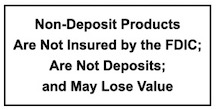An FHA Lender Explains New Limits for Cash-Out Refinancing
Starting September 1st, 2019, homeowners will be slightly more limited in how much equity they can access through a cash-out refinance from the Federal Housing Administration (FHA).
The FHA published Mortgagee Letter (ML) 2019-11, “Maximum Loan-to-Value (LTV) and Combined Loan-to-Value (CLTV) Percentages for Cash-Out Refinance Mortgages,” announcing the reduction of its current maximum LTV and CLTV percentages from 85% to 80%.
What is a Cash-Out Refinance?
A cash-out refinance pays off your existing mortgage and replaces it with a loan for more than you owe on your house. Homeowners must have equity built up in their house in order to use a cash-out refinance.
For example, if your house is worth $300,000 and you only owe $150,000 on the mortgage, you have $150,000 in built up equity in the home. However, homeowners cannot access 100% of this equity.
Prior to 2009, the LTV on cash-out refinances was 95%. In 2009, FHA adjusted the maximum LTV on cash-out refinances to 85% in response to the weakening housing market.
“People really started using their homes as ATM’s and when the market plummeted, they ended up upside-down,” said Rick Sharga, a mortgage industry expert.
The FHA is lowering the maximum LTV on cash-out refinances again, this time to 80%, to prevent another housing market collapse.
Is a Cash-Out Refinance Right for You?
Cash-Out refinances have become increasingly popular over the years and homeowners can use the money on anything they wish. If you are considering a cash-out refinance, a good rule of thumb is to only use the cash for something that will improve your financial picture. Avoid increasing your monthly debt with no return of investment (ROI).
Here are some examples of how a cash-out refinance could benefit homeowners.
Improve your credit score: Paying off debts will decrease your credit card utilization which has a significant impact on your credit score. A higher credit score means more favorable loan terms in the future, for example, if you plan on financing or leasing a new vehicle.
Pay off other debts with higher interest rates: A cash-out refinance is a larger loan often resulting in a slightly higher payment. However, if you are paying on credit cards with 20% interest, paying off these balances with a cash-out refinance at 4% would make financial sense.
Home improvements: Smart home improvement projects will not only improve your quality of living but will increase your home’s value and put more equity back into the home.
Pay for your children’s education expenses: A cash-out refinance might be the right decision and may have a lower interest rate than a student loan.
Homeowners may also consider a traditional refinance. Homeowners cannot pullout cash from their home with a traditional refinance. They can however keep more money in their pocket by changing their loan terms or lowering their interest rate.
If you would like to learn more about what refinancing options are available to you, please contact a First Independence Bank Loan Consultant at (586) 416-5750.










